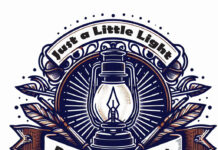The governor’s overall spending plan for the next budget year (beginning July 1) is estimated at $26.5 billion.
At its core is the general fund, the estimated cost ‒ $11.2 billion ‒ of operating state government day to day. This fund is special because most of it – 91 percent – is financed with state sales and income taxes. The remainder is derived from other excise taxes and most of the revenue from oil and gas severance taxes. (A state property tax for schools is also collected, but channeled directly into a central revenue pool for base aid to local districts.)
The general fund, often called “the budget”, drives the taxing and spending debates in Topeka. The fund is part of a complicated system. Its strength depends most upon the exchange and interplay of dollars circulating through the pockets of Kansans and the ledgers of businesses. If the economy goes down, so will the collection of taxes; and in good times when sales and incomes rise, so do government revenues.
Last year, Kansas posted a 9.5 percent increase in net gross domestic production, highest of any state. This has added to robust growth in recent years, creating a projected $2.8 billion operating balance this year, atop $1.7 billion already in reserve.
Of the balance, the governor proposes next year to invest roughly $1 billion in remaining covid relief funds to pay down state debt and to invest in new capital projects. After other projects, the surplus next year is estimated at $1.4 billion plus $1.8 billion in reserves.
Recent budgets are distinguished because they have offered consecutive billion-dollar balances. State law, passed 30 years ago, required ending balances of at least five percent. But legislators often suspended the requirement as they struggled to secure constitutional funding for local schools (1990s, early 00’s). During the deficit-ridden Brownback years (2011-2017), taxes were slashed, borrowing and spending increased and state bankruptcy loomed, erasing any thought of rainy day funds.
*
Revenue estimates come from the Department of Revenue and are based on a November forecast by the Consensus Estimating Group, an independent panel of economists and budget experts. The forecast is revised in April and is central to crafting a budget during the final days of a legislative session.
Gov. Laura Kelly anticipates $12.6 billion in available funds next year and $11.2 billion in operating expenses. Balance, $1.4 billion. Here are chief components of the revenue estimates:
‒ Income taxes: $4.45 billion from individuals; $1.38 million from corporations; $40 million from financial institutions. Total, $5.87 billion.
‒ Excise taxes: Retail sales, $2.8 billion; compensating use (Internet sales), $802 million; taxes on tobacco and alcohol, $226.2 million; severance taxes on oil and gas, $32.8 million; taxes on insurance premiums, corporate franchising, motor carriers and misc., $239.2 million.
‒ Other revenues, including interest on funds and agency earnings: $26.5 million.
*
Primary estimates for general fund expenses next year:
‒ General government, $1.06 billion. This includes, among others, the Department of Administration, Department of Revenue, Board of Tax Appeals, Governor’s office, Attorney General, Secretary of State, State Treasurer, the
Legislature and the Judiciary.
‒ Human Services, $2.7 billion. This is for the Departments of Children and Families, Aging and Disability Services, Labor, Commission on Veterans Affairs, Kansas Neurological Institute; state hospitals at Larned, Osawatomie and Parsons.
‒ Education, $6.3 billion. This includes local schools, community colleges, vo-tech institutions, state universities, school for the deaf, the state Historical Society and State Library.
‒ Public Safety, $1.05 billion. This includes the Department of Corrections, KBI, State Fire Marshal, Adjutant General, Sentencing Commission and nine state prisons, including one for juveniles.
‒ Agriculture and Natural Resources, $29.3 million. This includes the Department of Agriculture, Department of Health and Environment, the State Fair, Kansas Water Office and the Department of Wildlife and Parks.
(Next: Budget thoughts)





